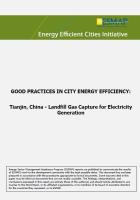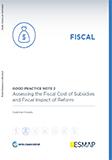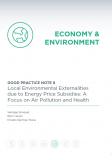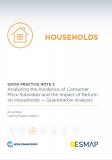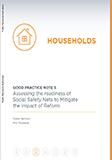Publications
The city of Tianjin, the fifth largest city in China, has implemented a project to recover landfill gas (LFG), which was otherwise being released into the atmosphere, and burn pretreated LFG for electricity generation. The project was located at the Shuangkuo Landfill, one of five municipal waste landfills in Tianjin. The planned capacity of the project is 4.3 MW which is being installed in stages. The first generator, 1.03 MW, started operation in May 2008, currently utilizing 500-600 cubic meters of landfill gas. The electricity produced is being sold to the North China Power Grid under a long-term contract. Through the project, the city was able to use waste to generate revenues and gain local environmental benefits.
The project was initiated by the Tianjin Municipal Government, which has invested CNY46.7 million (US$6.9 million) in the project. The project has been implemented and is being operated by a specially created entity, the Tianjin Clean Energy and Environmental Engineering Co. Ltd. (TCEE). The project will obtain revenues from the sale of electricity which, over the project’s life, will amount to CNY245.2 million (US$36.2 million). The project has been registered as a CDM project under the Kyoto protocol and reached an agreement with the World Bank to purchase the certified emission credits (CERs) from the project.
The successful implementation of the project provides an excellent demonstration of the technology and the institutional mechanisms for LFG recovery and electricity generation, which can be applied to many other large Chinese cities.
ESMAP. 2009. Good Practices in City Energy Efficiency: Tianjin, China - Landfill Gas Capture for Electricity Generation. ESMAP Energy Efficient Cities Initiative. Washington, DC: World Bank.
